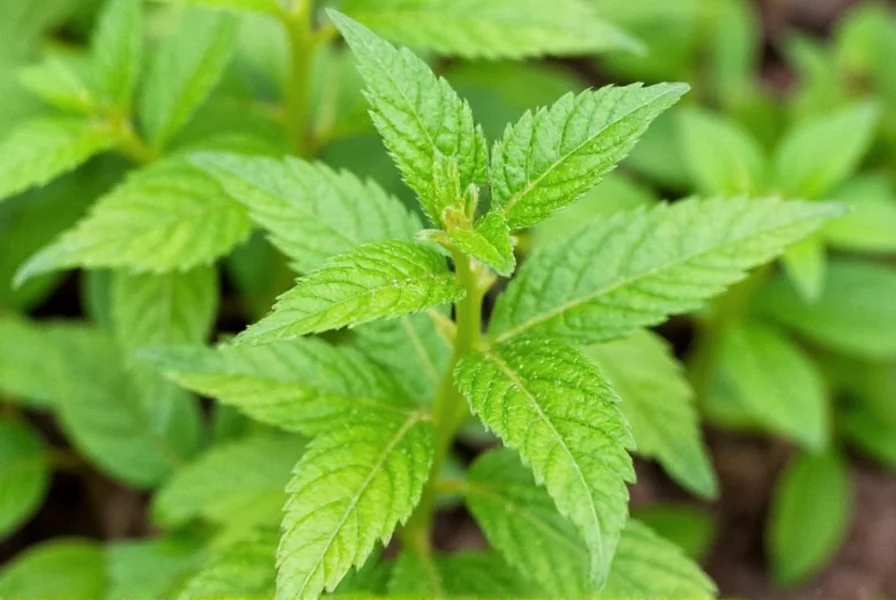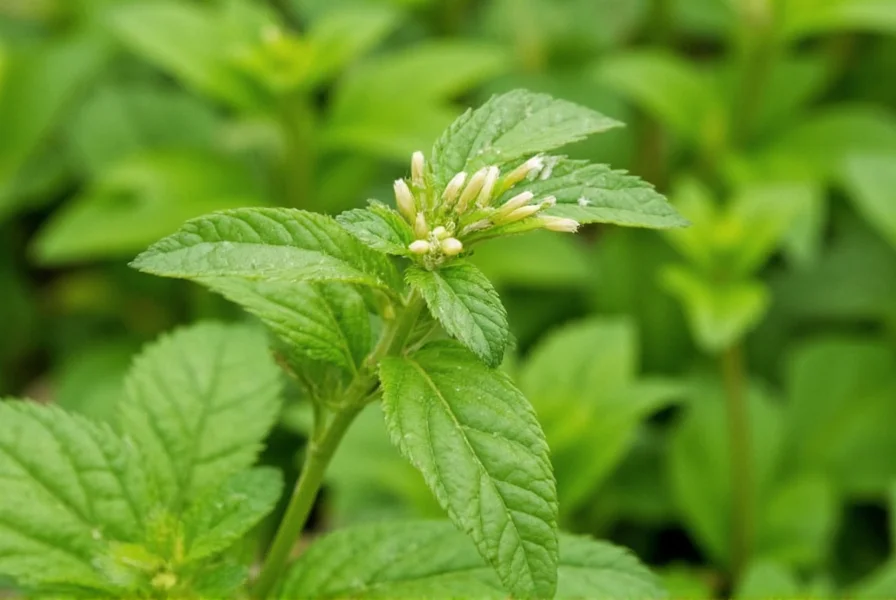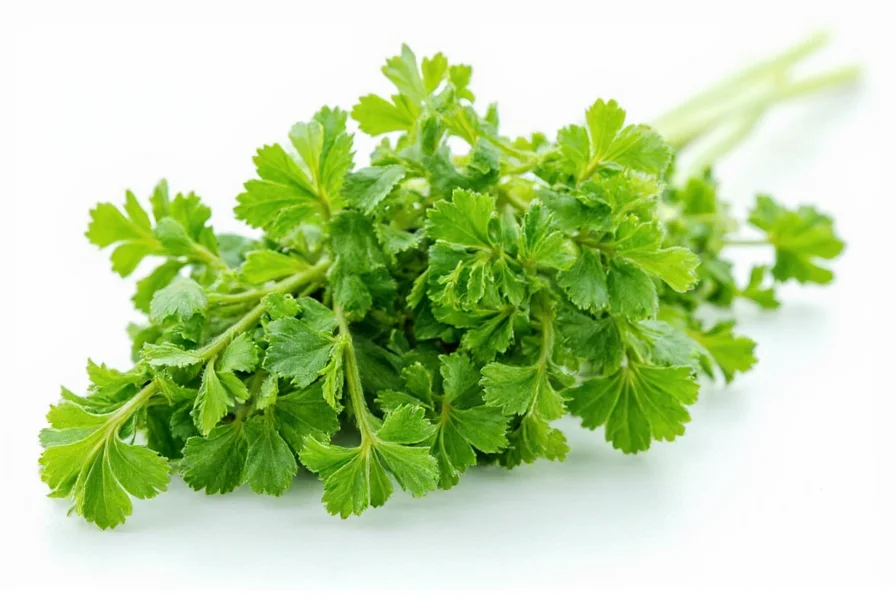Chervil, often overlooked in favor of more robust herbs, offers a sophisticated flavor profile that elevates dishes without overpowering them. This cool-weather herb thrives in partial shade and moist soil, making it relatively easy to cultivate in home gardens or containers. Unlike many herbs that intensify in flavor when dried, chervil's delicate essence is best appreciated fresh, which explains why it's rarely found in dried herb sections of grocery stores.
Physical Characteristics and Identification
Chervil features bright green, fern-like leaves that grow in a rosette pattern from the base. The leaves are finely divided with a lacy appearance, distinguishing it from flat-leaf parsley which has broader, more substantial leaves. When mature, chervil produces small white flowers in umbrella-shaped clusters typical of the Apiaceae family. The plant typically reaches 12-24 inches in height. One distinctive characteristic is its subtle anise or licorice aroma when the leaves are crushed, though significantly milder than tarragon or fennel.

Historical Background and Origin
Native to the Caucasus region, chervil has been cultivated since ancient times, with references appearing in Roman texts. It gained prominence in French cuisine during the Middle Ages and became a staple in European gardens by the 17th century. French chefs particularly valued chervil for its ability to enhance dishes without dominating other flavors, earning it the nickname "herb of elegance." Unlike many herbs that traveled to the Americas with European settlers, chervil never achieved the same popularity in North America, remaining somewhat of a specialty herb outside of professional culinary circles.
Culinary Applications and Flavor Profile
Chervil's flavor profile represents what is chervil herb used for in professional kitchens—it offers a delicate balance of mild parsley notes with a subtle anise undertone. This nuanced flavor makes it particularly valuable in dishes where stronger herbs would overwhelm delicate ingredients. Chefs commonly use chervil in:
- Egg dishes like omelets and quiches
- Fish preparations and seafood sauces
- Salad dressings and vinaigrettes
- Vegetable dishes, particularly with asparagus and carrots
- Herb butters and compound butters
- The classic French fines herbes blend (with parsley, tarragon, and chives)
Unlike many herbs that benefit from cooking to release flavors, chervil's delicate compounds break down with heat. For this reason, it's almost always added at the very end of cooking or used raw. This characteristic explains why understanding what is chervil herb in culinary contexts matters for proper usage—it's not a substitute for hardier herbs that can withstand prolonged cooking.
Chervil vs Parsley: Understanding the Difference
Many people wonder about the chervil vs parsley difference when encountering this herb for the first time. While both belong to the same plant family and share visual similarities, they have distinct characteristics:
| Characteristic | Chervil | Parsley |
|---|---|---|
| Leaf Shape | Fine, lacy, fern-like | Broad, flat or curly |
| Flavor Profile | Mild anise/licorice notes with subtle parsley flavor | Grassy, slightly peppery, more assertive |
| Heat Tolerance | Poor—loses flavor quickly with cooking | Good—flavor intensifies slightly with cooking |
| Culinary Use Timing | Always added at the end or used raw | Can be used during cooking or as garnish |
| Substitution Ratio | N/A | Use 1.5x more parsley to approximate chervil's mildness |
Growing Chervil: Practical Cultivation Guide
Learning how to grow chervil herb successfully requires understanding its preference for cool conditions. This herb bolts (goes to seed) quickly in warm weather, which diminishes leaf production and flavor. For best results when determining what is chervil herb cultivation:
- Plant seeds directly in garden soil in early spring or fall when temperatures are between 50-70°F (10-21°C)
- Choose a location with partial shade, especially protection from afternoon sun
- Maintain consistently moist soil—chervil dislikes drying out
- Harvest leaves when plants reach 6-8 inches tall, taking outer leaves first
- Succession plant every 2-3 weeks for continuous harvest during cool seasons
- Consider growing in containers that can be moved to shadier spots as temperatures rise
Chervil's taproot makes it difficult to transplant, so direct sowing is recommended. The seeds require light to germinate, so simply press them into the soil surface rather than covering deeply. Gardeners in warmer climates often treat chervil as a winter annual, planting in fall for harvest through spring.
Nutritional Profile and Potential Health Benefits
While primarily valued for its culinary applications, chervil offers notable nutritional content. A quarter cup of fresh chervil provides approximately:
- Rich in vitamin K (important for blood clotting and bone health)
- Good source of vitamin C (supports immune function)
- Contains vitamin A (important for vision and immune health)
- Provides folate (essential for cell division and DNA synthesis)
- Contains trace minerals including potassium and iron
Traditional medicine has used chervil for digestive issues and as a mild diuretic, though scientific evidence for these applications remains limited. Unlike more potent medicinal herbs, chervil's health benefits primarily stem from its nutrient density rather than powerful phytochemicals.
Storage and Preservation Techniques
One of the challenges with understanding what is chervil herb in practical terms involves its notoriously short shelf life. Fresh chervil typically lasts only 2-3 days at room temperature and up to one week when properly stored. To maximize freshness:
- Treat like cut flowers—trim stems and place in a glass with an inch of water
- Cover loosely with a plastic bag and refrigerate
- Change water every other day
- For longer storage, chop finely and freeze in ice cube trays with water or oil
Drying chervil generally fails to preserve its delicate flavor, which is why many cooks seek a fresh chervil substitute when unavailable. The closest alternatives include a combination of parsley and a tiny pinch of tarragon or fennel fronds, though none perfectly replicate chervil's unique profile.
Common Substitutions and Culinary Workarounds
When fresh chervil isn't available, understanding what is chervil herb's role in a recipe helps determine appropriate substitutions. For the chervil herb flavor profile in most applications:
- For every tablespoon of chervil: use 2 tablespoons flat-leaf parsley plus 1/8 teaspoon dried tarragon
- In fines herbes blends: replace chervil with additional parsley and a touch of chives
- For egg dishes: a small amount of fresh dill can provide similar delicate notes
- In salad dressings: substitute with fresh lemon thyme for a different but complementary flavor
It's important to note that chervil is not the same as cilantro—these herbs belong to different plant families and have distinctly different flavor profiles. While both have delicate leaves, cilantro offers a citrusy, sometimes soapy flavor that doesn't substitute well for chervil's anise notes.

Seasonality and Availability
Chervil's seasonality significantly impacts its availability. In most climates, fresh chervil appears in markets from early spring through early summer and again in the fall. During summer months when temperatures rise, chervil becomes scarce as the plants bolt. Specialty grocers and farmers' markets are more likely to carry fresh chervil than standard supermarkets. When purchasing, look for vibrant green leaves without yellowing or wilting, which indicates freshness.











 浙公网安备
33010002000092号
浙公网安备
33010002000092号 浙B2-20120091-4
浙B2-20120091-4